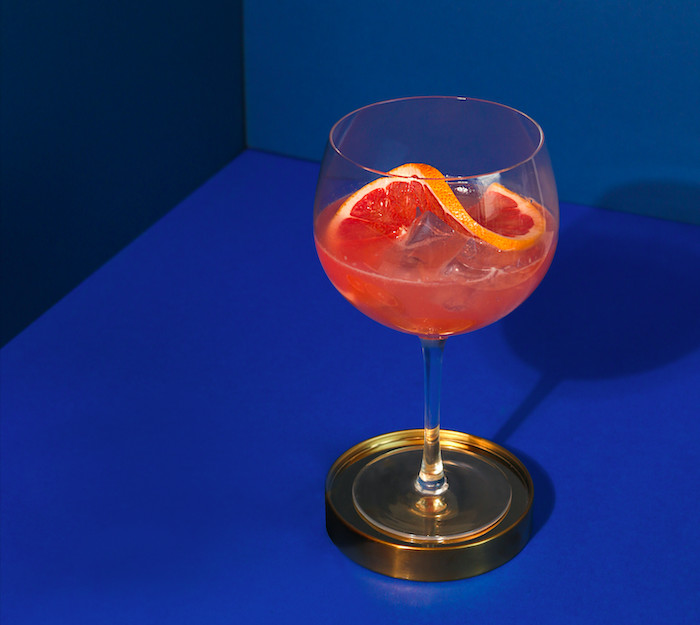
Leaving headspace above wine allows the volatile aromas to circulate, giving the drinker orthonasal pleasure. Professor Charles Spence explains how this works and why there’s a case to be made for a similar approach in cocktails.
Generally-speaking, in the world of wine, it would seem that the more expensive the vintage, the less of the liquid you are likely to find in the bottom of your glass. The underpinning logic here is that the empty headspace over the surface of the liquid allows for the concentration of the volatile aromas in the glass itself. The benefits of so doing are not to be sniffed at, as it were, given that it is commonly suggested that 75-95% of what we think we are tasting we are actually smelling.
At the same time, of course, the wine expert makes much of the legs seen running down the inside of the glass when the liquid is swirled around. The expert will also want to pay careful attention to any differences in the wine’s bouquet that may be revealed by gently agitating the liquid in the glass – this, the difference between the first and second nose. None of this would be possible, of course, with a wine glass that had been filled to the rim. A similar approach to serving spirits in glasses that are mostly empty is also adopted when it comes to enjoying a fine whisky, brandy, or when serving a quality cognac from a balloon or tasting glass.
In recent years, we have started to see the same thinking applied to high-end cocktails, which are now sometimes served in wine-style glasses, giving the liquid plenty of headroom, but the most common practice, in many bars and for many cocktails, is to fill the glass close to the rim. If you don’t believe me, just take a look at the various examples of Cocktail Porn shown in recent issues of Class magazine. Why should that be, and might not your customers enjoy the orthonasal pleasure of the drinks you serve much more if the aromas were to be concentrated in the empty headspace over the liquid in the glass?
In a sense, one might wonder whether if the convention is bound up in the customer perception of value for money. While some bars may be confident enough to serve a glass housing more air than liquid, most may not be. Consider here only the tradition for beer glasses to include a line that, if not reached by the level of the liquid, may lead the punter, who feels short-changed, to request a top-up from whoever is serving behind the bar. In this case, though, note how the volatile-filled bubbles in the head of the beer effectively capture the aroma of the liquid and thus, in a way, serve the same function as a partially-filled glass in the case of wine. Indeed, it is even said that the distinctive rim of a straight-sided pint glass helps to generate more volatile-rich aromatic foam in the glass.
Eye appeal
Another drink that is typically served in a full cup is coffee. Intriguingly, speciality coffee contains even more distinct volatile aromas than a fine wine (estimated at somewhere in the region of 1,200 volatiles for coffee as compared to 800-1,000 for a fine wine). Once again, though, note how the crema of a well-made espresso also helps to capture some of the delicious aroma of the coffee, presumably allowing the drinker to enjoy it retronasally on the swallow, rather than orthonasally on the sniff.
Of course, it might be said that the pleasure of a well-made cocktail, unlike a glass of fine wine, resides much more in the drink’s eye appeal, with the scope to play with colour, texture, garnish and vessel. What is more, the ice-cold temperature at which so many cocktails are served will also reduce the release of any volatile aromas from the surface of the liquid.
Cocktails presumably offer a far greater range of mouthfeel and other oral-somatosensory experiences than do wine, and perhaps a good part of the pleasure resides there. Indeed, in the case of vodka – a spirit that, by traditional definition, is odourless, colourless and tasteless – all one is left with is the possibly distinctive mouthfeel characteristics that different brands offer the drinker.
There is, then, no simple answer to the question of the relative proportion of the pleasure associated with the multisensory tasting experience that should be ascribed to each of the drinker’s senses. Nevertheless, the next time you create a new serve/cocktail, you may perhaps consider whether it really makes sense to fill the glass to the rim. Should the orthonasal aroma of your drink be something worth shouting about, then perhaps it is time to overturn the convention in the category and start serving your drinks in glasses that are anything but full to the rim. That, or figure out some other foamy means of capturing the drink’s aromas.


